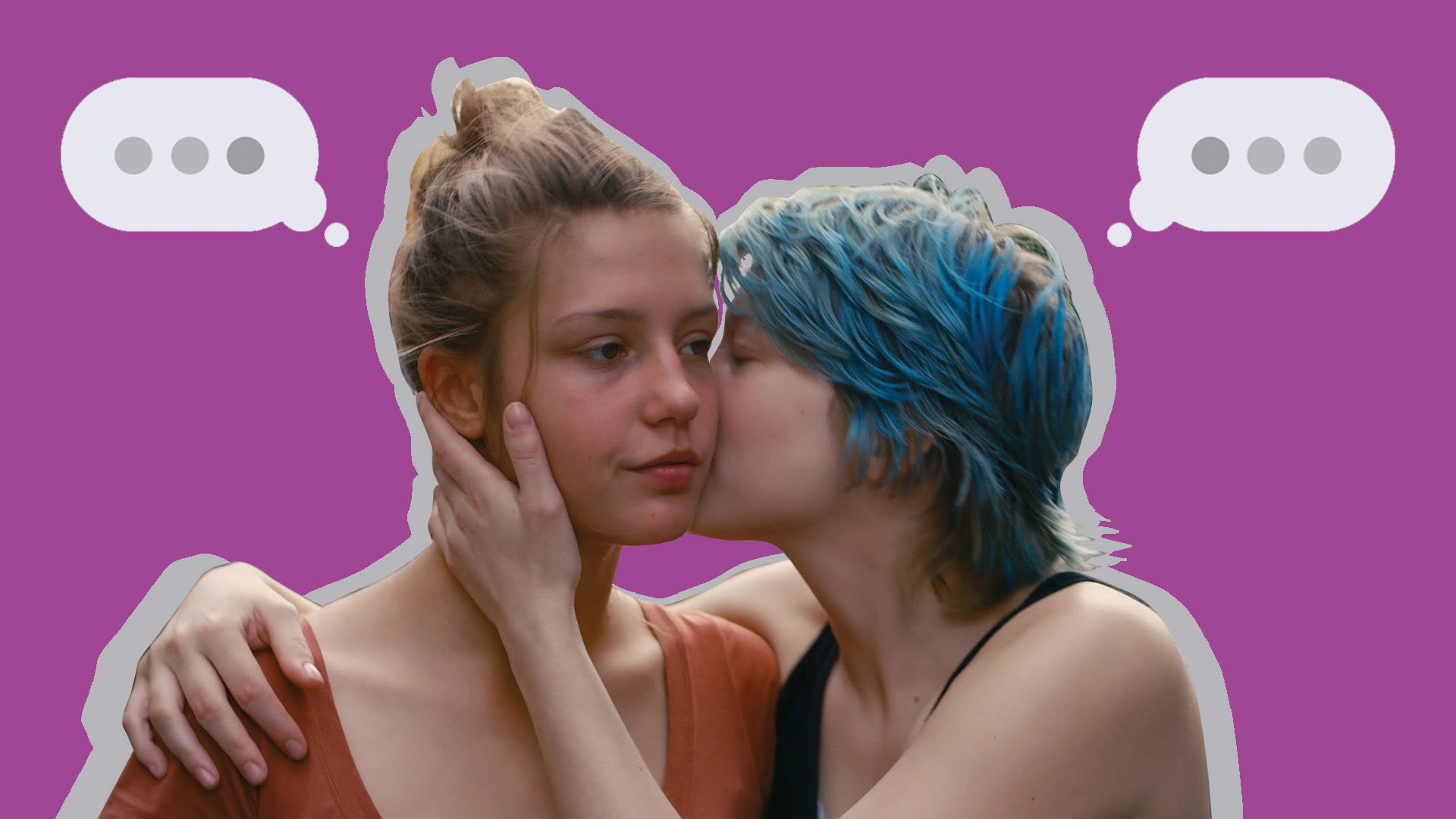The way queer women flirt, according to Twitter, can include: silently liking each other’s selfies but never speaking to each other, openly flirting with each other while both misread it as friendliness, and literally just making eye contact.
The common factor is misunderstanding, seemingly because we either don’t believe the other person could possibly be interested, or we think they could be but are too afraid of coming across as creepy. A combo of internalised misogyny, homophobia and general anxiety are probably to blame for the uniquely bad brand of flirting that is associated with gay and bisexual women.
When queer women flirt on social media, it’s usually more implicit than explicit — plenty of couples meet through social networks that aren’t specifically for dating, like Tumblr. Twitter regularly sees selfie hashtags like #lgbtcuties, #selfiesforqueers and #singlequeers pop up, while every other person seems to be seeking a girlfriend.
I’ve participated in these selfie hashtags. It’s fun to post nice photos of yourself and to see other happy, proud queer people being themselves online. But as a form of flirting, it’s one of the least risky ways of putting yourself out there. The replies to these selfies are inevitably full of awed compliments and jk “date me’s”. As Twitter user @madeinHAWAII_ so succinctly puts it, these interactions raise the question: “Do you want to ride my face or is this just a compliment?”
The flirting can stop there, or it can turn into prolonged sessions so subtle that they eventually evolve into plain old online friendships. One of the women I spoke to said that social media has helped her form “a few flings that turn into long-standing friendships, and those we’re-exclusively-dating-but-it’s-not-serious types of almost-relationships”.
Perhaps part of the reason why internet dating is such a thing for queer women is because it allows room for nuance. When internet dating doesn’t work, this might come down to fear: Martha, who is 27 and lives in London, says that she tends to avoid seriously flirting with people on Twitter because it feels “unsolicited”. Many other queer women, including Vanessa, a London-based writer I chatted to, have expressed concerns about their attention being seen as “creepy” or inappropriate. This is probably in part because of years of internalising stereotypical ideas about lesbians being predatory, as well as women being discouraged from making the first move, so as not to appear too confident or aggressive when compared to men.
In a scene from Netflix comedy-drama One Day at a Time, recently out lesbian teenager Elena tries to navigate a conversation where her non-binary friend is asking her out; she stumbles over her words, almost derailing the moment entirely before shouting “Gay! Me, gay!” It’s like when you see someone on the tube with her girlfriend, or wearing a queer T-shirt or pin and you desperately think of ways to signal that you’re one of them. Until you feel it’s safe, it can be hard to put yourself out there and express your queerness. One tweet from a young queer woman reads: “queer girls should have like some sort of identification of being queer or something so i know that it’s safe to flirt [sic]”.
Several of the queer women I spoke to said they preferred to flirt with women in real life – at Pride events or queer venues – because they feel safer in assuming that they are speaking to gay women. Martha said that she doesn’t like to flirt with women online because she feels that people often act differently than how they do in person. She said, “You might not fancy someone at all in person,” because of the contrast between their online ‘persona’ and their actual personality.
The women I chatted to are largely in their mid- to late-20s. Yet, many of the queer women tweeting memes about gay awkwardness seem to be teenagers. Maybe the dead-end flirting is the result of inexperience. When online relationships are successful, it’s because the people involved have had the guts to take it offline — to follow through and meet up.
The internet has often been a safe haven for queer people. From Tumblr to Twitter to fanfiction sites and Livejournal… the option of being anonymous online means that it is a place where closeted queer people are able to be more open than they feel they can be in real life. Unsurprisingly, the natural progression of having large queer communities online is that dating in that space can be an important part of life as a queer person.
There are the obvious dating apps: Her, Tinder, OKCupid, Bumble. There are also less conventional options like @herstorypersonals on Instagram – a digital version of the traditional personal ad. There are ways to make online dating more bearable and slightly less terrifying.
Tay, another queer woman I spoke to, said that her preferred app is OKCupid because of its ‘I don’t want to see or be seen by straight people’ option. This helps bisexual and pansexual women, who have had bad encounters with straight men. It also makes sure you don’t encounter the dreaded ‘straight couple seeking a threesome’ or straight girls looking for friends.
With time, queer people will see more dating apps and services that cater to them. As more and more people identify themselves as queer, the fear of rejection by straight women might lessen. In the meantime, we all need to accept the hard truth: If you really want a girlfriend, you’re probably going to have to log off.
